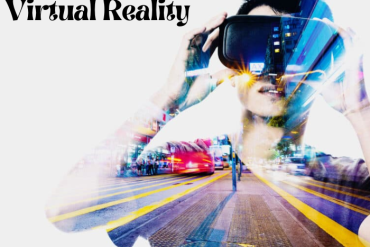Virtual reality is a hot trend in the gaming industry, and it’s not just for kids anymore. Virtual reality technology has been around for decades, but it’s only recently that the technology has evolved to where it can be used by more than just gamers.
Virtual reality has been in the spotlight for years, but it’s never been more popular
Virtual reality has been around for a long time, but it’s never been more popular. The technology is getting better and cheaper, which means that even people who don’t have a lot of money can enjoy it. It’s also easier to find your way around virtual reality than ever before–and that can be especially helpful if you’re new to the world of VR games!
The most recent innovation in gaming technology was announced by Sony Corporation on October 11th at Paris Games Week 2019: PlayStation VR (PSVR) 2 or PSVR 2.0 as they call it will be released sometime next year with improved graphics and sensors for better tracking accuracy so players won’t get motion sickness when playing games like Skyrim VR or Beat Saber
Gaming technology where players interact
Virtual reality is a new type of gaming technology where players interact with digital environments that simulate reality as closely as possible. The goal of VR is to create an immersive, interactive experience that allows users to fully immerse themselves in their favorite game.
VR technology has been used in gaming for several years now and it’s finally starting to make its way into other industries like entertainment and education. But there are still plenty of questions about what exactly virtual reality can offer us–and how we’ll use it moving forward!
VR is measured in degrees of freedom
To understand what six degrees of freedom means, let’s take a look at reality. The human body has six degrees of freedom: head movement, neck rotation, torso rotation and two hands (one each).
In VR technology today, you can move around in virtual space by using your head and shoulders as controllers for leaning left or right or up or down; rotating your torso left/right; moving your hands up/down on either side of you; tapping on objects nearby with one hand while holding onto something else with the other hand. That’s all there is to it!
The Oculus Rift headset was one of the most popular headsets when it first came out
The Oculus Rift headset was one of the most popular headsets when it first came out. It’s a gaming device that looks like a pair of goggles and has sensors that track your head movement and adjust the view accordingly. The Oculus is also an affordable option, meaning it can be used by anyone who wants to experience virtual reality in their living room.
The downside to this device? You have to have good eyesight because you need glasses-free 3D technology for the best experience possible!
The Oculus Rift headset is a great option for those who want to experience virtual reality without spending too much money. It’s also perfect for gamers because it allows you to play your favorite games in a whole new way. You can be transported into another world or even become the character you’re trying to beat!
Non-gaming applications for VR technology
You may have heard that there are many other non-gaming applications for VR technology, from education and training to entertainment and health care.
VR is a new kind of gaming technology that allows you to immerse yourself in virtual worlds by using your hands, feet, head position, voice commands and more–the more degrees of freedom (DOF) an experience has, the more immersive it will be.
The Oculus Rift headset was one of the most popular headsets when it first came out because it had an impressive DOF: 1 DOF means that you can move only a single direction; 2 DOF means two directions; 3 DOF means three directions; 4 DoF refers to four ways forward/backward plus left/right rotation.
Conclusion
It seems that the world of virtual reality is only getting bigger and better. We’ve seen a lot of progress both in terms of hardware and software, but there’s still much more to come!





